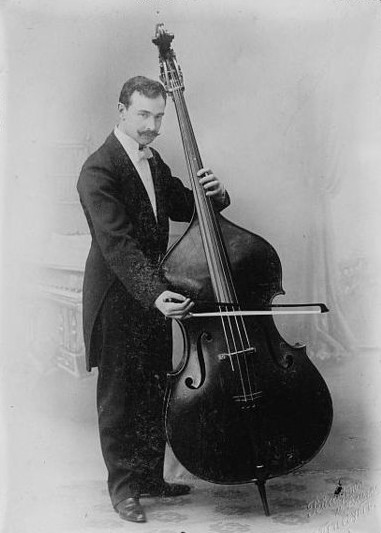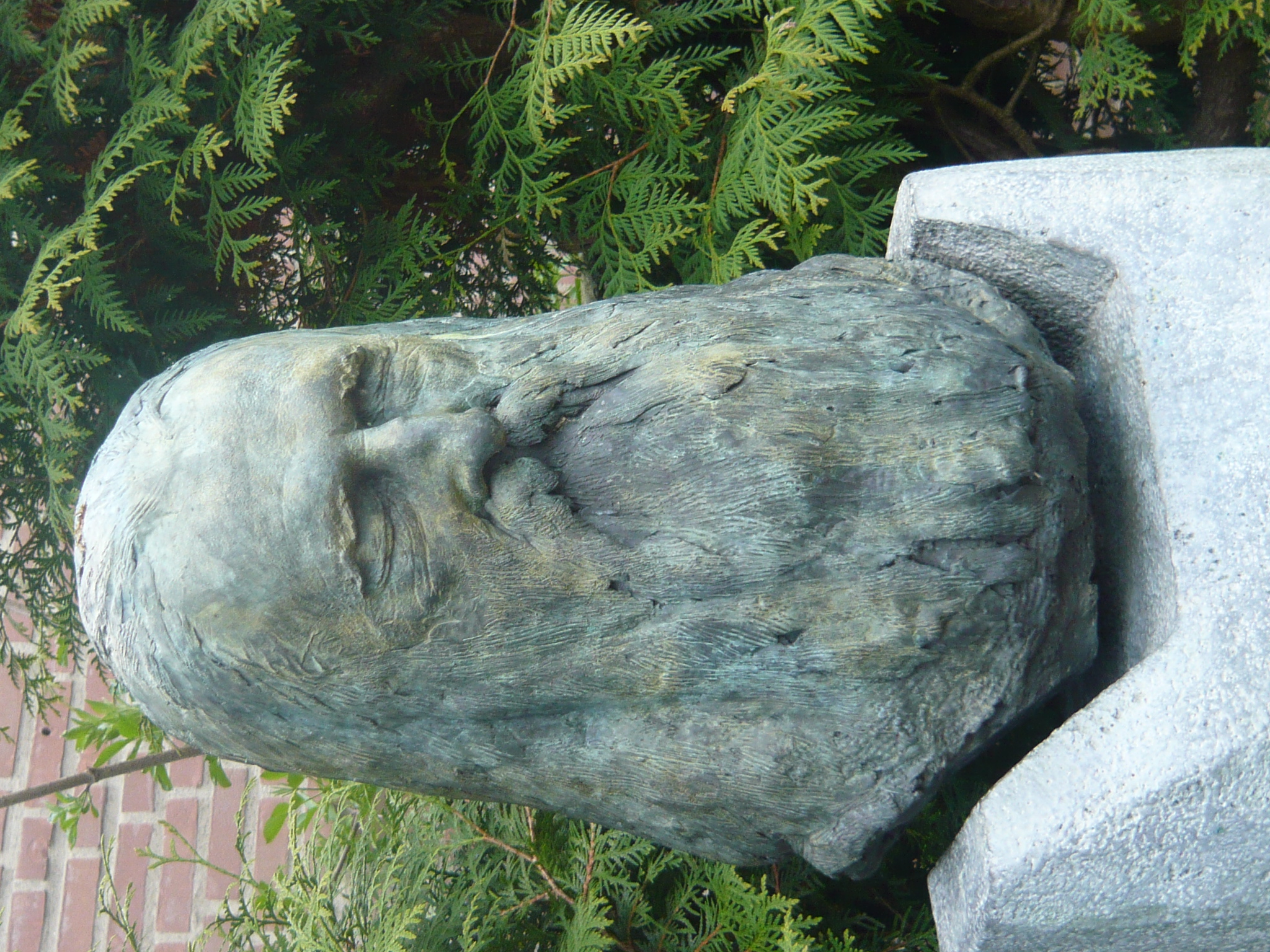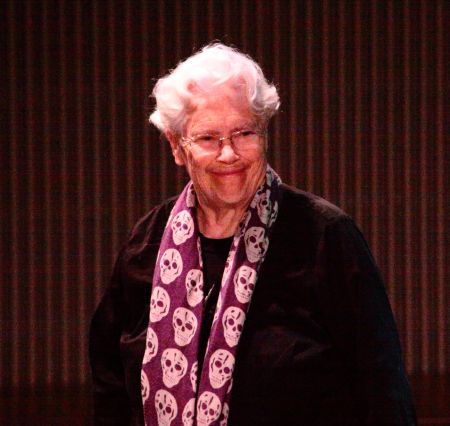|
Lucia Dlugoszewski
Lucia Dlugoszewski (June 16, 1925 – April 11, 2000) was a Polish-American composer, poet, choreographer, performer, and inventor. She created over a hundred musical instruments, including the timbre piano, a sort of prepared piano in which hammers and keys were replaced with bows and plectra. Background and early years The daughter of Polish immigrants, Dlugoszewski was born and raised in Detroit. Beginning at the age of six, she studied piano under Agelageth Morrison at the Detroit Institute of Musical Arts, also known as the Detroit Conservatory of Music. Later in life, she studied pre-med at Wayne State University, where she also took physics courses. Surprised and disappointed by an unsuccessful application to medical school in 1950, Dlugoszewski spontaneously moved to New York City, where she would spend the rest of her life. In New York, Dlugoszewski took piano lessons from Grete Sultan and studied analysis with Felix Salzer and composition with Edgard Varèse. Apart f ... [...More Info...] [...Related Items...] OR: [Wikipedia] [Google] [Baidu] |
Polish-American
Polish Americans ( pl, Polonia amerykańska) are Americans who either have total or partial Poles, Polish ancestry, or are citizens of the Republic of Poland. There are an estimated 9.15 million self-identified Polish Americans, representing about 2.83% of the Demographics of the United States, U.S. population. Polish Americans are the second-largest Central European ethnic group after German Americans, and the Race and ethnicity in the United States, eighth largest ethnic group overall in the United States. The first Polish immigrants came to the Jamestown, Virginia, Jamestown colony in 1608, twelve years before the Pilgrim (Plymouth Colony), Pilgrims arrived in Massachusetts. Two Polish volunteers, Casimir Pulaski and Tadeusz Kościuszko, led armies in the American Revolutionary War, Revolutionary War and are remembered as American heroes. Overall, around 2.2 million Poles and Polish subjects immigrated into the United States, between 1820 and 1914, chiefly after national insurg ... [...More Info...] [...Related Items...] OR: [Wikipedia] [Google] [Baidu] |
Serge Koussevitzky
Sergei Alexandrovich KoussevitzkyKoussevitzky's original Russian forename is usually transliterated into English as either "Sergei" or "Sergey"; however, he himself adopted the French spelling "Serge", using it in his signature. (SeThe Koussevitzky Music Foundations official web site Retrieved 5 November 2009.) His surname can be transliterated variously as "Koussevitzky", "Koussevitsky", "Kussevitzky", "Kusevitsky", or, into Polish, as "Kusewicki"; however, he himself chose to use "Koussevitzky". (russian: Серге́й Алекса́ндрович Кусеви́цкий, links=no; ''Sergey Aleksandrovich Kusevitsky''; 4 June 1951) was a Russian-born conductor, composer and double-bassist, known for his long tenure as music director of the Boston Symphony Orchestra from 1924 to 1949. Biography Early career Koussevitzky was born into a Jewish family of professional musicians in Vyshny Volochyok, Tver Governorate (present-day Tver Oblast), about 250 km northwest of Moscow ... [...More Info...] [...Related Items...] OR: [Wikipedia] [Google] [Baidu] |
Virgil Thomson
Virgil Thomson (November 25, 1896 – September 30, 1989) was an American composer and critic. He was instrumental in the development of the "American Sound" in classical music. He has been described as a modernist, a neoromantic, a neoclassicist, and a composer of "an Olympian blend of humanity and detachment" whose "expressive voice was always carefully muted" until his late opera ''Lord Byron'' which, in contrast to all his previous work, exhibited an emotional content that rises to "moments of real passion". Biography Early years Thomson was born in Kansas City, Missouri. As a child he befriended Alice Smith, great-granddaughter of Joseph Smith, founder of the Latter-day Saint movement. During his youth he often played the organ in Grace Church, (now Grace and Holy Trinity Cathedral), as his piano teacher was the church's organist. After World War I, he entered Harvard University thanks to a loan from Dr. Fred M. Smith, the president of the Reorganized Church of Jesus Chr ... [...More Info...] [...Related Items...] OR: [Wikipedia] [Google] [Baidu] |
Haiku
is a type of short form poetry originally from Japan. Traditional Japanese haiku consist of three phrases that contain a ''kireji'', or "cutting word", 17 '' on'' (phonetic units similar to syllables) in a 5, 7, 5 pattern, and a ''kigo'', or seasonal reference. Similar poems that do not adhere to these rules are generally classified as ''senryū''. Haiku originated as an opening part of a larger Japanese poem called renga. These haiku written as an opening stanza were known as ''hokku'' and over time they began to be written as stand-alone poems. Haiku was given its current name by the Japanese writer Masaoka Shiki at the end of the 19th century. Originally from Japan, haiku today are written by authors worldwide. Haiku in English and haiku in other languages have different styles and traditions while still incorporating aspects of the traditional haiku form. Non-Japanese haiku vary widely on how closely they follow traditional elements. Additionally, a minority movement withi ... [...More Info...] [...Related Items...] OR: [Wikipedia] [Google] [Baidu] |
Gourd
Gourds include the fruits of some flowering plant species in the family Cucurbitaceae, particularly ''Cucurbita'' and ''Lagenaria''. The term refers to a number of species and subspecies, many with hard shells, and some without. One of the earliest domesticated types of plants, subspecies of the bottle gourd, ''Lagenaria siceraria'', have been discovered in archaeological sites dating from as early as 13,000 BCE. Gourds have had numerous uses throughout history, including as tools, musical instruments, objects of art, film, and food. Terminology ''Gourd'' is occasionally used to describe crop plants in the family Cucurbitaceae, like pumpkins, cucumbers, squash, luffa, and melons. More specifically, ''gourd'' refers to the fruits of plants in the two Cucurbitaceae genera ''Lagenaria'' and ''Cucurbita'', or also to their hollow, dried-out shell. There are many different gourds worldwide. The main plants referred to as gourds include several species from the genus ''Cucurbita'' ... [...More Info...] [...Related Items...] OR: [Wikipedia] [Google] [Baidu] |
Moondog
Louis Thomas Hardin (May 26, 1916 – September 8, 1999), known professionally as Moondog, was an American composer, musician, performer, music theoretician, poet and inventor of musical instruments. Largely self-taught as a composer, his prolific work widely drew inspiration from jazz, classical, Native American music which he had become familiar with as a child, and Latin American music. His strongly rhythmic, contrapuntal pieces and arrangements later influenced composers of minimal music, in particular American composers Steve Reich and Philip Glass. Due to an accident, Moondog was blind from the age of 16. He lived in New York City from the late 1940s until 1972, during which time he was often found on Sixth Avenue, between 52nd and 55th Streets, busking, selling records and performing poetry. Regularly appearing in a cloak and a horned helmet, he was recognized as "the Viking of Sixth Avenue" by thousands of passersby and residents who were not aware of his musical c ... [...More Info...] [...Related Items...] OR: [Wikipedia] [Google] [Baidu] |
Harry Partch
Harry Partch (June 24, 1901 – September 3, 1974) was an American composer, music theorist, and creator of unique musical instruments. He composed using scales of unequal intervals in just intonation, and was one of the first 20th-century composers in the West to work systematically with microtonal scales, alongside Lou Harrison. He built custom-made instruments in these tunings on which to play his compositions, and described the method behind his theory and practice in his book '' Genesis of a Music'' (1947). Partch composed with scales dividing the octave into 43 unequal tones derived from the natural harmonic series; these scales allowed for more tones of smaller intervals than in standard Western tuning, which uses twelve equal intervals to the octave. To play his music, Partch built many unique instruments, with such names as the Chromelodeon, the Quadrangularis Reversum, and the Zymo-Xyl. Partch described his music as corporeal, and distinguished it from abs ... [...More Info...] [...Related Items...] OR: [Wikipedia] [Google] [Baidu] |
Pauline Oliveros
Pauline Oliveros (May 30, 1932 – November 24, 2016) was an American composer, accordionist and a central figure in the development of post-war experimental and electronic music. She was a founding member of the San Francisco Tape Music Center in the 1960s, and served as its director. She taught music at Mills College, the University of California, San Diego (UCSD), Oberlin Conservatory of Music, and Rensselaer Polytechnic Institute. Oliveros authored books, formulated new music theories, and investigated new ways to focus attention on music including her concepts of "deep listening" and "sonic awareness", drawing on metaphors from cybernetics. She was an Eyebeam resident. Early life and career Oliveros was born in Houston, Texas. She started to play music as early as kindergarten, and at nine years of age she began to play the accordion, received from her mother, a pianist, because of its popularity in the 1940s.Baker, Alan"An interview with Pauline Oliveros" January 2003. '' ... [...More Info...] [...Related Items...] OR: [Wikipedia] [Google] [Baidu] |
Marie Menken
Marie Menken (born Marie Menkevicius; May 25, 1909 – December 29, 1970) was an American experimental filmmaker, painter, and socialite. She was noted for her unique filming style that incorporated collage. She was one of the first New York filmmakers to use a hand-held camera and trained Andy Warhol on its use. Her film '' Glimpse of the Garden'' was selected for preservation in the National Film Registry by the Library of Congress. Early life Marie Menkevicius was born in Brooklyn, New York, on May 25, 1909, to Roman Catholic Lithuanian immigrant parents. She studied at the New York School of Fine and Industrial Arts as well as the Art Students League of New York and honed her craft as a painter. To support herself, she worked as a secretary at the Solomon R. Guggenheim Museum before receiving a scholarship from Yaddo and moving to upstate New York. Professional career Menken and her husband Willard Maas began a well-respected avant-garde art group known as The Gryphon Gr ... [...More Info...] [...Related Items...] OR: [Wikipedia] [Google] [Baidu] |
Jonas Mekas
Jonas Mekas (; December 24, 1922 – January 23, 2019) was a Lithuanian-American filmmaker, poet, and artist who has been called "the godfather of American avant-garde cinema". Mekas' work has been exhibited in museums and at festivals worldwide. Mekas was active in New York City, where he co-founded Anthology Film Archives, The Film-Makers’ Cooperative, and the journal '' Film Culture''. He was also the first film critic for ''The Village Voice''. In the 1960s, Mekas launched anti-censorship campaigns in defense of the LGBTQ-themed films of Jean Genet and Jack Smith, garnering support from cultural figures including Jean-Paul Sartre, Simone de Beauvoir, Norman Mailer, Susan Sontag. Mekas mentored and supported many prominent American artists and filmmakers, including Ken Jacobs, Peter Bogdanovich, Chantal Akerman, Richard Foreman, John Waters, Barbara Rubin, Yoko Ono, and Martin Scorsese. He helped launch the writing careers of the critics Andrew Sarris, Amy Taubin, a ... [...More Info...] [...Related Items...] OR: [Wikipedia] [Google] [Baidu] |
Guns Of The Trees
''Guns of the Trees'' is a 1962 American black-and-white film by Jonas Mekas. It follows two young couples – Barbara and Gregory (Frances Stillman and Adolfas Mekas) and Argus and Ben (Argus Spear Juillard and Ben Carruthers). The film features an original musical score by Lucia Dlugoszewski and also folk songs by Sara Wiley, Caither Wiley and Tom Sankey. It also features Allen Ginsberg reading his poetry. George Maciunas makes a short appearance in the film. References External links ''Guns of the Trees''at the Film-Makers' Cooperative The Film-Makers' Cooperative a.k.a. legal name The New American Cinema Group, Inc. is an artist-run, non-profit organization incorporated in July 1961 in New York City by Jonas Mekas, Shirley Clarke, Stan Brakhage, Lionel Rogosin, Gregory Markopo ... * 1961 drama films 1961 films Films directed by Jonas Mekas Films set in New York (state) Films shot in New York (state) American black-and-white films 1960s English-language films ... [...More Info...] [...Related Items...] OR: [Wikipedia] [Google] [Baidu] |








